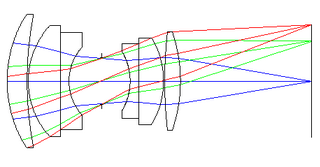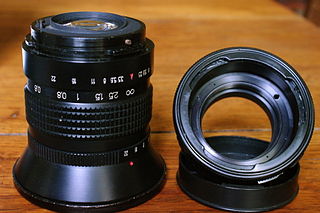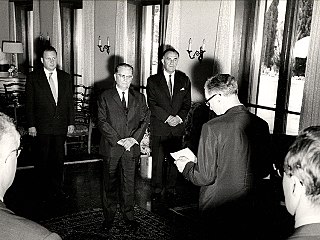
Dresden is the capital city of the German state of Saxony and it is the second most populous city after Leipzig. It is the 12th most populous city of Germany, the fourth largest by area, and the third most populous city in the area of former East Germany, after Berlin and Leipzig. Dresden's urban area comprises the towns of Freital, Pirna, Radebeul, Meissen, Coswig, Radeberg and Heidenau and has around 790,000 inhabitants. The Dresden metropolitan area has approximately 1.34 million inhabitants.

The bombing of Dresden was a joint British and American aerial bombing attack on the city of Dresden, the capital of the German state of Saxony, during World War II. In four raids between 13 and 15 February 1945, 772 heavy bombers of the Royal Air Force (RAF) and 527 of the United States Army Air Forces (USAAF) dropped more than 3,900 tons of high-explosive bombs and incendiary devices on the city. The bombing and the resulting firestorm destroyed more than 1,600 acres (6.5 km2) of the city centre. Up to 25,000 people were killed. Three more USAAF air raids followed, two occurring on 2 March aimed at the city's railway marshalling yard and one smaller raid on 17 April aimed at industrial areas.

The Exakta was a camera produced by the Ihagee Kamerawerk in Dresden, Germany, founded as the Industrie und Handels-Gesellschaft mbH, in 1912. The inspiration and design of both the VP Exakta and the Kine Exakta are the work of the Ihagee engineer Karl Nüchterlein, who did not survive the Second World War.

Carl Zeiss AG, branded as ZEISS, is a German manufacturer of optical systems and optoelectronics, founded in Jena, Germany in 1846 by optician Carl Zeiss. Together with Ernst Abbe and Otto Schott he laid the foundation for today's multinational company. The current company emerged from a reunification of Carl Zeiss companies in East and West Germany with a consolidation phase in the 1990s. ZEISS is active in four business segments with approximately equal revenue in almost 50 countries, has 30 production sites and around 25 development sites worldwide.

Praktica was a brand of camera manufactured by Pentacon in Dresden in eastern Germany, within the GDR between 1949 and the German reunification in 1990. The firm Pentacon was divided in mainly two parts and sold after German reunification. Schneider Kreuznach and Noble bought parts of it. Pentacon is a Dresden-based company in the optical and precision engineering industry, which was at times a major manufacturer of photo cameras. The name Pentacon is derived on the one hand from the Contax brand of the Dresden Zeiss Ikon Kamerawerke and Pentagon, because a pentaprism for SLR cameras developed for the first time in Dresden has this shape in cross section. Today's PENTACON GmbH Foto- und Feinwerktechnik is still based in Dresden. It is part of the Schneider Group, Bad Kreuznach. Pentacon is the modern-day successor to Dresden camera firms such as Zeiss Ikon; for many years Dresden was the world's largest producer of cameras. Previous brands of the predecessor firms included Praktica, Exa, Pentacon, Zeiss Ikon, Contax, Ica, Ernemann, Exakta, Praktiflex, and many more.
Kiev is a Soviet and Ukrainian brand of photographic equipment including cameras manufactured by the Arsenal Factory in Kyiv, Ukraine. The camera nameplates show the name "KIEV", with older cameras using "КИЕВ" or "КИЇВ" in Cyrillic.

Contax began as a German camera model in the Zeiss Ikon line in 1932, and later became a brand name. The early cameras were among the finest in the world, typically featuring high quality Zeiss interchangeable lenses. The final products under the Contax name were a line of 35 mm, medium format, and digital cameras engineered and manufactured by Japanese multinational Kyocera, and featuring modern Zeiss optics. In 2005, Kyocera announced that it would no longer produce Contax cameras. The rights to the brand are currently part of Carl Zeiss AG, but no Contax cameras are currently in production, and the brand is considered dormant.

The history of the single-lens reflex camera (SLR) begins with the use of a reflex mirror in a camera obscura described in 1676, but it took a long time for the design to succeed for photographic cameras. The first patent was granted in 1861, and the first cameras were produced in 1884, but while elegantly simple in concept, they were very complex in practice. One by one these complexities were overcome as optical and mechanical technology advanced, and in the 1960s the SLR camera became the preferred design for many high-end camera formats.

The double Gauss lens is a compound lens used mostly in camera lenses that reduces optical aberrations over a large focal plane.

Pentacon is the company name of a camera manufacturer in Dresden, Germany.

The Pentacon Six is a single-lens reflex (SLR) medium format camera system made by East German manufacturer Pentacon from 1966 to 1992. The Six accepts lenses with the Pentacon Six mount, a breech-lock bayonet mount.

The Pentacon Six mount is a breech-lock bayonet lens mount originally used by several medium format single-lens reflex cameras from East Germany.

The "Sport" camera is the series production model of a prototype camera called Gelveta. The Gelveta was designed and built by A. O. Gelgar between 1934 and 1935. It is the earliest known production 35mm SLR camera ever to be built, but fewer than 320 examples were made. The actual launch date of the "Sport" is somewhat uncertain, however it was in series production by 1936 and must undoubtedly be one of the two earliest generally available SLR cameras using the 35mm film format, the other being the German Ihagee Kine Exakta, launched in 1936. It was manufactured by the Soviet camera factory Gosudarstvennyi Optiko-Mekhanicheskii Zavod, The State Optical-Mechanical Factory in Leningrad. GOMZ for short. The camera name is engraved in Cyrillic on the finder housing above the lens: „Спорm“. The manufacturer's prism logo in gold on black with the factory initials ГОМЗ (GOMZ) is shown behind a circular magnifying window on the top left camera front. An estimated number of 19,000 cameras were made before Leningrad was besieged in September 1941 and suffered heavy damage. The design concept was not continued later.

Ludwig Jakob Bertele was a German optics constructor. His developments received universal recognition and serve as a basis for considerable part of the optical designs used today.

Topogon is a wide field, symmetrical photographic lens patented by Robert Richter in 1933 for Carl Zeiss AG. As there are four meniscus elements in four groups, deployed symmetrically around the central aperture, it is considered a double Gauss lens variant.

The Kine Exakta was the first 35mm single-lens reflex (SLR) still camera in regular production. It was presented by Ihagee Kamerawerk Steenbergen GmbH, Dresden at the Leipziger Frühjahrsmesse in March 1936. The Exakta name had already been used by Ihagee on a roll film rangefinder RF camera line since 1933, among these the Vest Pocket Exakta Model B from which the Kine Exakta inherited its general layout and appearance. The word Kine never appeared on the camera itself, only in the instruction manuals and advertising to distinguish it from the roll film variants. Several of its features constituted the foundation for the majority of 35mm SLR cameras produced ever since, although at this stage in a relatively primitive state.

Kamera-Werkstätten Guthe & Thorsch was a photographic equipment manufacturer based in Dresden.

Meyer Optik Görlitz, originally Hugo Meyer & Co., was a former optical company from Görlitz in Germany. It was founded in 1896 by optician Hugo Meyer and businessman Heinrich Schätze. The company got off to a successful start with the development of the wide-angle Aristostigmat lens and the subsequent acquisition of Optical Institute Schulze and Billerbeck, the manufacturers of “Euryplan lenses”, as they were called at the time.

Peter Blachstein was a German journalist who became a politician. During the middle 1930s he spent time in the Hohnstein Concentration Camp, but he was released and participated in the Spanish Civil War on the anti-fascist side. The rest of the Nazi years he spent outside Germany, mostly in Norway and Sweden. Following the restoration of diplomatic relations between West Germany and Yugoslavia, in 1968 he became West Germany's ambassador in Belgrade.



















